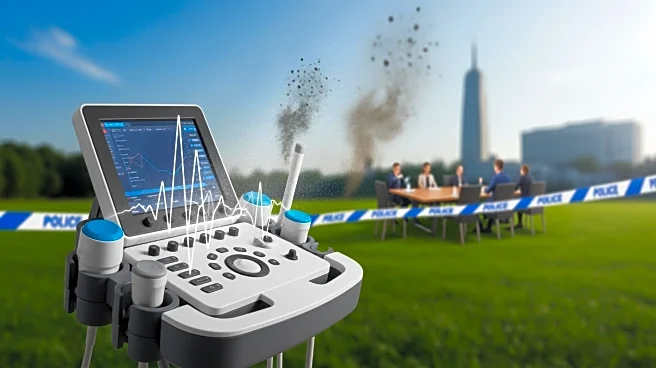What's Happening?
Ultrasound technology is emerging as a promising method for environmental remediation, particularly in the degradation of organic pollutants in water. Recent studies have demonstrated the effectiveness
of ultrasonic waves in breaking down contaminants through acoustic cavitation, which generates hydroxyl radicals that facilitate the degradation process. This method is being explored for its potential to enhance the efficiency of pollutant degradation, especially when combined with advanced oxidation processes. The technology is being tested across various pollutants and environmental conditions, with a focus on optimizing parameters such as ultrasound frequency and power.
Why It's Important?
The significance of ultrasound technology in environmental remediation lies in its potential to offer a sustainable and efficient alternative to traditional methods. As industries and urbanization continue to contribute to environmental pollution, there is a growing need for effective remediation strategies. Ultrasound technology could play a crucial role in addressing water pollution, a major environmental concern, by providing a method that reduces the need for chemical additives and minimizes secondary pollution. This could lead to significant advancements in public health and environmental protection, benefiting industries and communities by providing cleaner water resources.
What's Next?
Future research is likely to focus on integrating ultrasound technology with other remediation techniques to broaden its applicability. Efforts will be made to optimize the reaction conditions and improve the efficiency of the process across different pollutants. The development of hybrid systems that combine ultrasound with other advanced oxidation processes could enhance the degradation of recalcitrant micro-contaminants. Additionally, there will be a push towards scaling up the technology for large-scale environmental applications, which will require addressing challenges related to energy consumption and equipment costs.
Beyond the Headlines
The adoption of ultrasound technology in environmental remediation could lead to long-term shifts in how industries approach waste management and pollution control. By providing a green and cost-effective solution, this technology could influence regulatory policies and encourage the development of more sustainable industrial practices. Moreover, the ethical implications of reducing chemical use in remediation processes could align with global efforts towards environmental sustainability and conservation.













